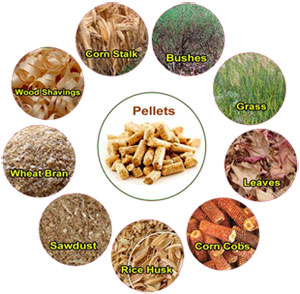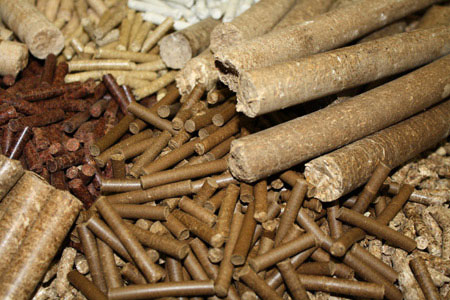As the biggest agrarian country in Europe with a high afforestation rate of 27%, France has abundant forestry resources, agricultural wastes and by-products for biofuel pelletizing. Nowadays laws like le Grenelle del’ environment in 2007 had been announced to prompt wood pellet production for its biomass environmental protection.
Raw Material Available to Make Wood Pellet in France
Forest resources are abundant in France. Around 15 million hectares of mainland France are covered with forest. The average afforestation rate in France is around 27%.
While lack of advanced technology and machines, almost all by-products from forestry are wasted. These wood stuff like leaf, round wood branch, logs are all best material in wood pellet production. Agriculture residues like corn stalks, wheat straws and husks can also be made into wood pellets. With reasonable investment of wood pellet mill, these wood wastes can be easily made into money.
Wood Pellet Production in France
The wood pellet production moves slowly since the early start in 1990s. The French pellets production, like other European country, is increasing since 2008. Many firms are working below a really potential of capacity because it’s a very young market.
More and more people has realized the benefits of wood pellets and start biomass wood pellet plants. Around 40 pellet producers are active in France, with a wood pellet production capacity between 10,000 and 30,000 tons per year and the majority of them working well below the full load capacity.
When talking about wood pellet mills, there are two kinds for your reference: Ring Die Wood Pellet Mill for industrial business and Flat Die Pellet Mill for small-scale business and home use. Sawmills still value raw materials like barks and sawdust as the main material.
Pellets Consumption in France
Wood pellets in France are mainly used as home heating fuel. Wood pellets are more popular in provinces than in urban areas and in the East and North regions because of long cold winter.
France shows a variety of climate conditions, which in turn offers opportunities for pellets usage both for stove and boilers. The North‐East part of France has a continental climate with long and cold winters and a strong tradition in wood energy similar to Germany and Switzerland. The development of pellets consumption was faster in these regions than in others, with a good balance between boilers and stoves sales.
In the Southern and Western parts of France where winters are less cold the use of wood for heating is limited, especially in urban and suburban areas. Pellet stoves have more success than boilers as they are mostly used to complement a central oil fuel heating system or an electric heating installation.
Investment Suggestion
Though wood pellet market has developed in an active way in France, its growth is relatively slow compared with its neighboring counties. According to the survey of Pro pellet France Association, the common awareness of pellet heating in France is still low and people there were not so familiar with wood pellets. In addition, wood pellet market develops unevenly in France. Pellets in other areas are not as popular as in North and East regions and more wood pellets are used in provinces than in urban areas. So if you want to invest in French wood pellet market, you may pay more attention on expanding your market on urban areas. And since the wood pellet plants are relatively small, large wood pellet plants can be invested in France.
Anna
Email: hotamisywoodpelletmill@gmail.com
Skype: andy.li798










